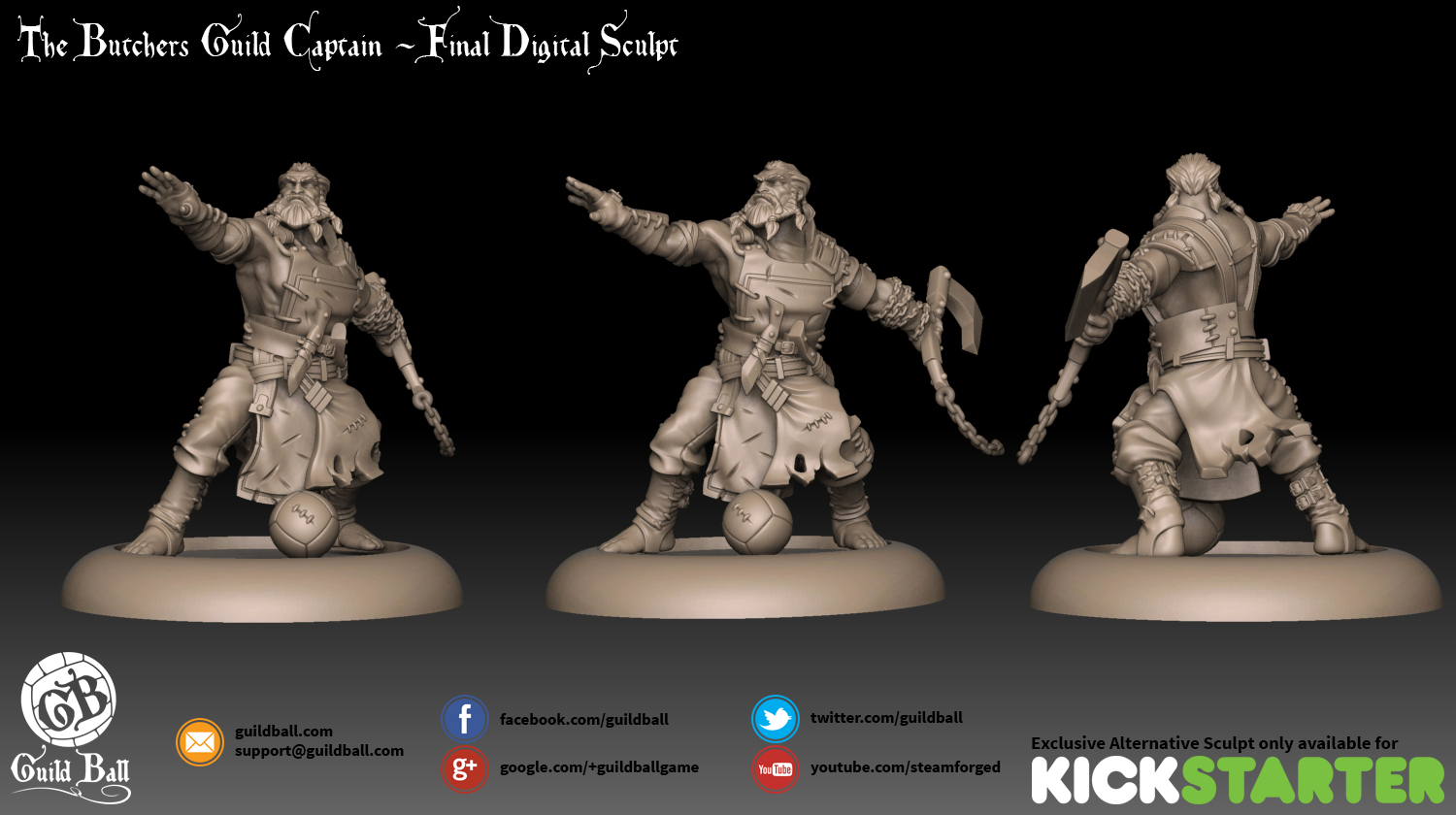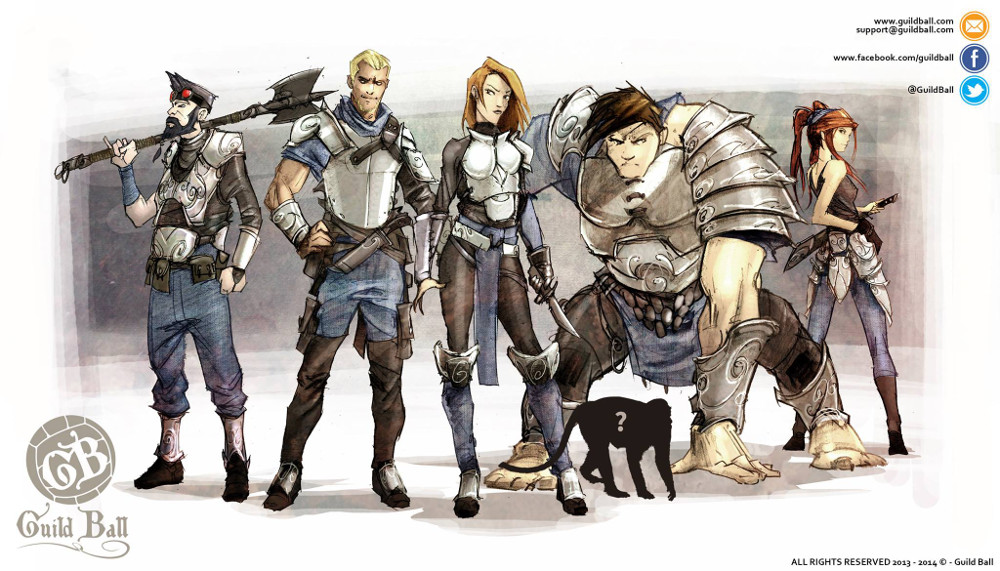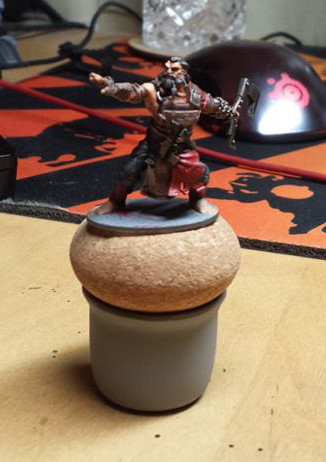http://www.brueckenkopf-online.com/?p=97668
la mayor parte de la info está en inglés. Sino, el link del FB oficial:
https://www.facebook.com/guildball

Moderador: Admins




Guild Ball…game mechanics and design…
This is the first in a series of articles talking about the Guild Ball game mechanics and the design philosophy behind them. I hoping this will give you a great insight into why the game is built the way it is and how it actually plays.
I’ve been agonising over how to write these articles…part of me wants to break down and analyse key games in the market and show how they are flawed or weak or stale and then go on to show how Guild Ball is better…but I think it is much cooler for me to talk about what we do and perhaps suggest how it is a good thing, with the odd sprinkling of examples.
The first element I want to talk about in a little detail is the core dice mechanic. This is such an important part to get right as it forms the foundation upon which you build the rest of the game. After establishing the core design principles (more on those next time), the dice mechanic informs practically every other design decision you need to make. We spent literally months nailing this with lots of back and forth, data analysis and actually sitting there rolling tonnes of different dice and feeling the right way.
This is a list of core elements I feel should be considered for the design of a dice mechanic:
Resolution Type – do you use a roll high to win, or roll low? Should you use a known Target Number for success or compare the roll with a Stat? Do you add the results together or consider each dice separately? How many dice should roll?
Probability Spread – Too wide a spread and the game feels quite random i.e. d20 systems like Infinity…too narrow and the game is too predictable. Also, how easy is the chance of success calculated ahead of the roll?
Usage Variety – how many game resolutions can be made using this mechanic? Too many resolution flows and the game is hard to understand/play, too few and the game can feel too simplistic.
Tactile Sensation – how many dice are fun to use? What kinds of dice? How many can you roll physically with models on the table?
Result Reading – How fast can you calculate the result of a roll?
Information Exchanges – how many times do you need to refer to your rulebook, model stats, opponent’s model stats to resolve an action? Things like comparing Attack stats with opponents Defense stats…then comparing weapon Strength with Armour to determine nets hits…its surprising how quickly the number of discrete maths computations you need to make to get to an action resolution.
Computation Count – how many bits of discrete maths (however simple) are required to achieve the resolution? Under the pressure of competitive (and sometime casual) play, even adding two dice results together and then calculating the difference against an armour value can be pretty tough…even with super simple maths.
At its core, Guild Ball uses a D6 dice pool system…what this actually means is that the active player grabs a number of D6 based on their relevant skill plus any applicable bonuses and this forms their dice pool. They then roll this dice pool and all the dice that hit the Target Number (or better) counts as ‘Hits’. To calculate the dice pool, each character has three key stats. The first is the relevant Player Stat of the active player…this is the number of dice you roll (plus any relevant bonuses from skills or situational stuff like charge attacks etc.). The second is the defence stat of the target model…this is a target number ranging from 2+ (easiest to hit) through to 6+ (hardest to hit). The last is the armour stat of the target model…this is a low-ish number generally between 1-3.
The flow is simple and very easy to pick up:
The Butcher’s defender wants to attack the skinny Fisher forward. He knows his Tactical stat is 4. He asks his opponent what the Defense and Armour of the Fisher forward is. Answer comes back 4+ for Defense (he’s a slippery bugger!) but only 1 for Armour (lightly armoured for speed).
The Butcher’s player charges (giving him a +2d6 bonus on his attack) and therefore rolls a total of 6D6. Average dice means he should get 3 hits but he goes one better with 4 dice showing 4+ or higher.
He now deducts the Armour value from the roll and nets 3 hits on the Fisher forward. He can then go on to spend those hits on raw damage, or push back, or knock-down, or even tackle the ball off the forward, all worked out using his unique playbook on his card….but more on this in a future article!
If you look at this flow, there is an elegance there…the active player refers just once to his card to calculate his dice pool, his opponent looks just once at his card to advise the target numbers and armour values. The dice roll is easy to read, you can physically move the dice with hits to one side away from the misses…you can then physically deduct the armour value from the hit dice to give oyu your net result. Job done…no maths required and yet you have taken into consideration your melee capability, plus your opponent’s defence and his armour value.





Steam Ball escribió:Sorpresa: se juega sin casillas, va como los juegos de guerra comunes, midiendo.

El gremio de pescadores se saleMephisto escribió:Varias imágenes sobre los equipos. No las pego pq son 6. Mirad el enlace que os pongo:
http://www.brueckenkopf-online.com/?p=99936


